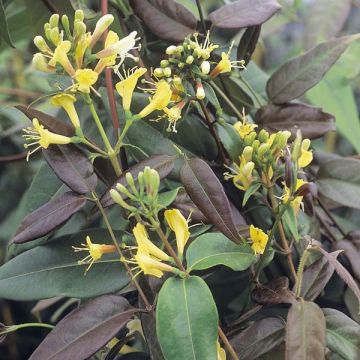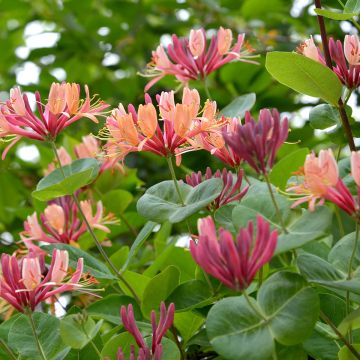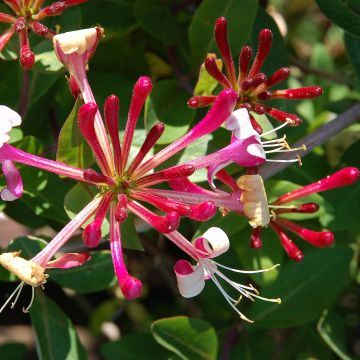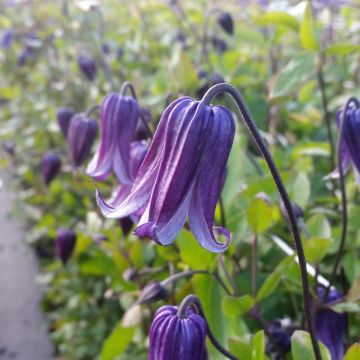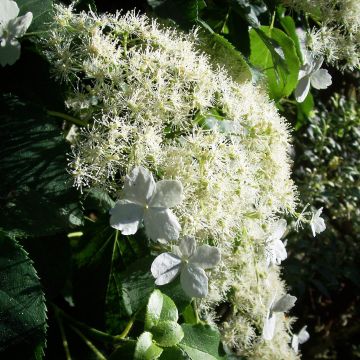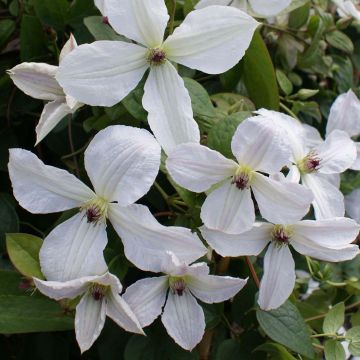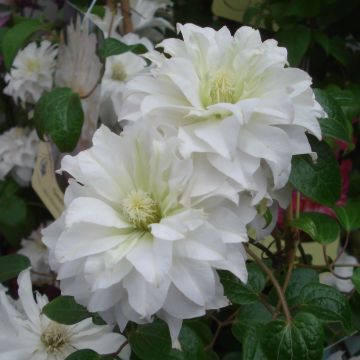

Lonicera similis var. delavayi
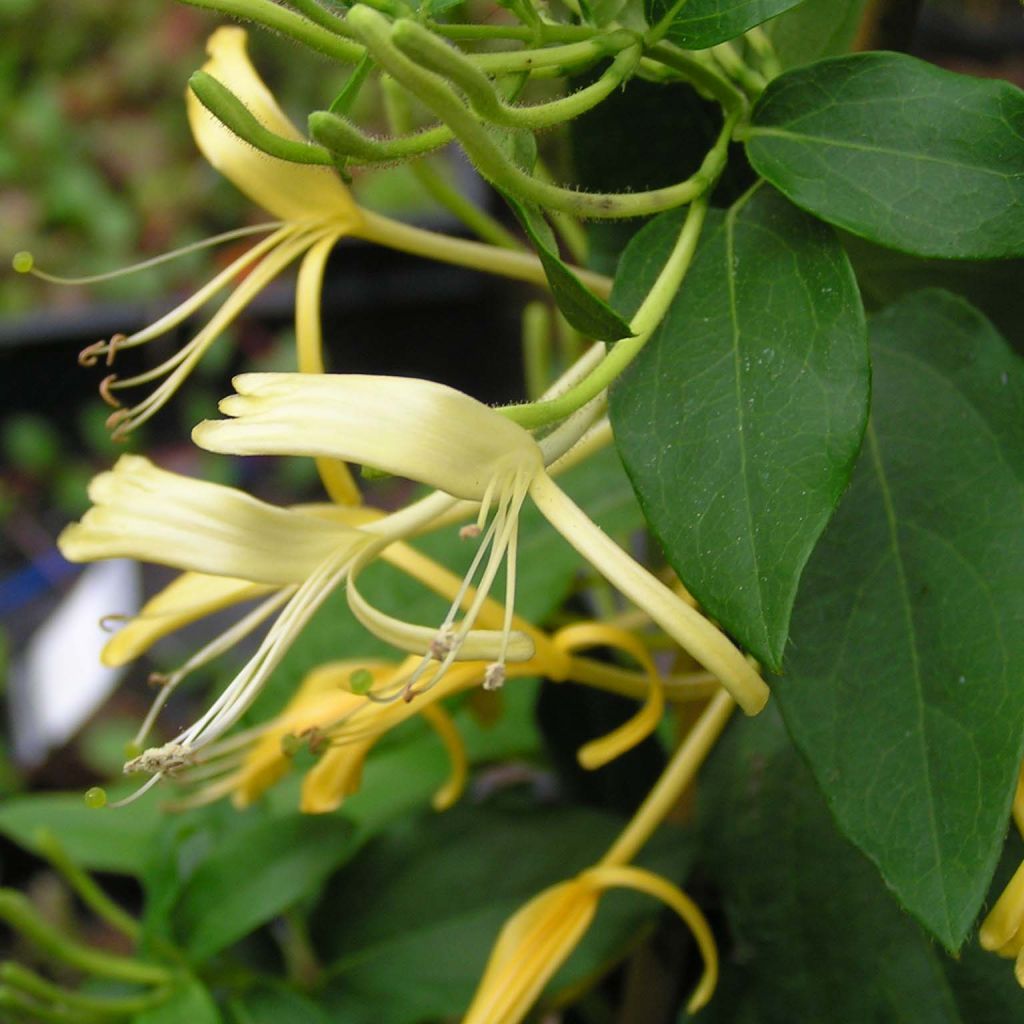

Lonicera similis var. delavayi
Lonicera similis var. delavayi
Lonicera similis var. delavayi
Delavay Honeysuckle
This item cannot be shipped to the selected country
Delivery charge from €5.90
Delivery charge from €5.90
Delivery to Corse prohibited
More information
Schedule delivery date,
and select date in basket
This plant carries a 6 months recovery warranty
More information
We guarantee the quality of our plants for a full growing cycle, and will replace at our expense any plant that fails to recover under normal climatic and planting conditions.
From €5.90 for pickup delivery and €6.90 for home delivery
Express home delivery from €8.90.
From €5.90 for pickup delivery and €6.90 for home delivery
Express home delivery from €8.90.
Delivery to Corse prohibited: UE law prohibits the import of this plant from mainland France to Corse as part of the fight against Xylella fastidiosa. Please accept our sincere apologies.
More information
Does this plant fit my garden?
Set up your Plantfit profile →
Description
Lonicera similis var. delavayi, also known as Delavay honeysuckle, combines multiple qualities. This climbing botanical species grows vigorously, retains its foliage in winter, and produces a massive flowering in summer, with cream and white colours and a remarkably fragrant scent in the evening. Very hardy and undemanding, it is a true force of nature that will conquer a fence or hedge and transform it within three years.
Lonicera similis var. delavayi belongs to the Caprifoliaceae family, like all honeysuckles. It was discovered in China before 1896, when it was introduced to France by the Vilmorin company. This climber produces very long stems, which lignify rapidly, measuring up to 5 m (16ft) in length, so it can reach over 4.50 m (15ft) in height with an equivalent spread. Its growth is rapid and vigorous. The stems are covered with long evergreen leaves measuring 4 to 8 cm (2 to 3in) in length, with an ovate lanceolate shape and dark green colour, arranged alternately. Flowering usually begins in late June or early July, and is remarkably abundant. Depending on the region and climate, it can continue until September. This flowering takes the form of tubular flowers measuring 3 cm (1in) in length, quickly transitioning from light yellow to white. In the late afternoon, they diffuse a powerful and pleasant fragrance for gardeners, as well as bees and even some night butterflies that gather there at dusk. They have two large coloured lips and expose the stamens. After pollination by pollinating insects, small berries form and turn blue-black in autumn. Toxic to humans, they are a delight for certain birds.
Lonicera similis var. delavayi is ideal as a wall cover to quickly dress up a fence, pole, tree, old conifer hedge, or even an unsightly structure. You can plant spring bulbs or cyclamen at its base, for example. To accompany it, choose another vigorous climbing plant with a staggered flowering period: Clematis montana Mayleen, Campsis capreolata, or even a the climbing rose Seagull, for example.
Report an error about the product description
Lonicera similis var. delavayi in pictures






Plant habit
Flowering
Foliage
Botanical data
Lonicera
similis var. delavayi
Caprifoliaceae
Delavay Honeysuckle
China
Other Honeysuckle
Planting and care
Lonicera similis var. delavayi should be planted in autumn or spring in a well-prepared, rich and loose soil, in a sunny or semi-shaded position (the base in shade and the top in the sun). Soils with a tendency towards limestone are well tolerated, with a generous addition of compost. Compost is necessary for planting and will be appreciated once a year, in autumn or spring. Water regularly and mulch the soil to keep it cool and help the plant establish. You should also water from time to time in case of abnormally dry and hot summers. Prune in late winter to balance the branches. Watch out for aphids!
Planting period
Intended location
Care
-
, onOrder confirmed
Reply from on Promesse de fleurs
Summer flowering climbers
Haven't found what you were looking for?
Hardiness is the lowest winter temperature a plant can endure without suffering serious damage or even dying. However, hardiness is affected by location (a sheltered area, such as a patio), protection (winter cover) and soil type (hardiness is improved by well-drained soil).

Photo Sharing Terms & Conditions
In order to encourage gardeners to interact and share their experiences, Promesse de fleurs offers various media enabling content to be uploaded onto its Site - in particular via the ‘Photo sharing’ module.
The User agrees to refrain from:
- Posting any content that is illegal, prejudicial, insulting, racist, inciteful to hatred, revisionist, contrary to public decency, that infringes on privacy or on the privacy rights of third parties, in particular the publicity rights of persons and goods, intellectual property rights, or the right to privacy.
- Submitting content on behalf of a third party;
- Impersonate the identity of a third party and/or publish any personal information about a third party;
In general, the User undertakes to refrain from any unethical behaviour.
All Content (in particular text, comments, files, images, photos, videos, creative works, etc.), which may be subject to property or intellectual property rights, image or other private rights, shall remain the property of the User, subject to the limited rights granted by the terms of the licence granted by Promesse de fleurs as stated below. Users are at liberty to publish or not to publish such Content on the Site, notably via the ‘Photo Sharing’ facility, and accept that this Content shall be made public and freely accessible, notably on the Internet.
Users further acknowledge, undertake to have ,and guarantee that they hold all necessary rights and permissions to publish such material on the Site, in particular with regard to the legislation in force pertaining to any privacy, property, intellectual property, image, or contractual rights, or rights of any other nature. By publishing such Content on the Site, Users acknowledge accepting full liability as publishers of the Content within the meaning of the law, and grant Promesse de fleurs, free of charge, an inclusive, worldwide licence for the said Content for the entire duration of its publication, including all reproduction, representation, up/downloading, displaying, performing, transmission, and storage rights.
Users also grant permission for their name to be linked to the Content and accept that this link may not always be made available.
By engaging in posting material, Users consent to their Content becoming automatically accessible on the Internet, in particular on other sites and/or blogs and/or web pages of the Promesse de fleurs site, including in particular social pages and the Promesse de fleurs catalogue.
Users may secure the removal of entrusted content free of charge by issuing a simple request via our contact form.
The flowering period indicated on our website applies to countries and regions located in USDA zone 8 (France, the United Kingdom, Ireland, the Netherlands, etc.)
It will vary according to where you live:
- In zones 9 to 10 (Italy, Spain, Greece, etc.), flowering will occur about 2 to 4 weeks earlier.
- In zones 6 to 7 (Germany, Poland, Slovenia, and lower mountainous regions), flowering will be delayed by 2 to 3 weeks.
- In zone 5 (Central Europe, Scandinavia), blooming will be delayed by 3 to 5 weeks.
In temperate climates, pruning of spring-flowering shrubs (forsythia, spireas, etc.) should be done just after flowering.
Pruning of summer-flowering shrubs (Indian Lilac, Perovskia, etc.) can be done in winter or spring.
In cold regions as well as with frost-sensitive plants, avoid pruning too early when severe frosts may still occur.
The planting period indicated on our website applies to countries and regions located in USDA zone 8 (France, United Kingdom, Ireland, Netherlands).
It will vary according to where you live:
- In Mediterranean zones (Marseille, Madrid, Milan, etc.), autumn and winter are the best planting periods.
- In continental zones (Strasbourg, Munich, Vienna, etc.), delay planting by 2 to 3 weeks in spring and bring it forward by 2 to 4 weeks in autumn.
- In mountainous regions (the Alps, Pyrenees, Carpathians, etc.), it is best to plant in late spring (May-June) or late summer (August-September).
The harvesting period indicated on our website applies to countries and regions in USDA zone 8 (France, England, Ireland, the Netherlands).
In colder areas (Scandinavia, Poland, Austria...) fruit and vegetable harvests are likely to be delayed by 3-4 weeks.
In warmer areas (Italy, Spain, Greece, etc.), harvesting will probably take place earlier, depending on weather conditions.
The sowing periods indicated on our website apply to countries and regions within USDA Zone 8 (France, UK, Ireland, Netherlands).
In colder areas (Scandinavia, Poland, Austria...), delay any outdoor sowing by 3-4 weeks, or sow under glass.
In warmer climes (Italy, Spain, Greece, etc.), bring outdoor sowing forward by a few weeks.

































